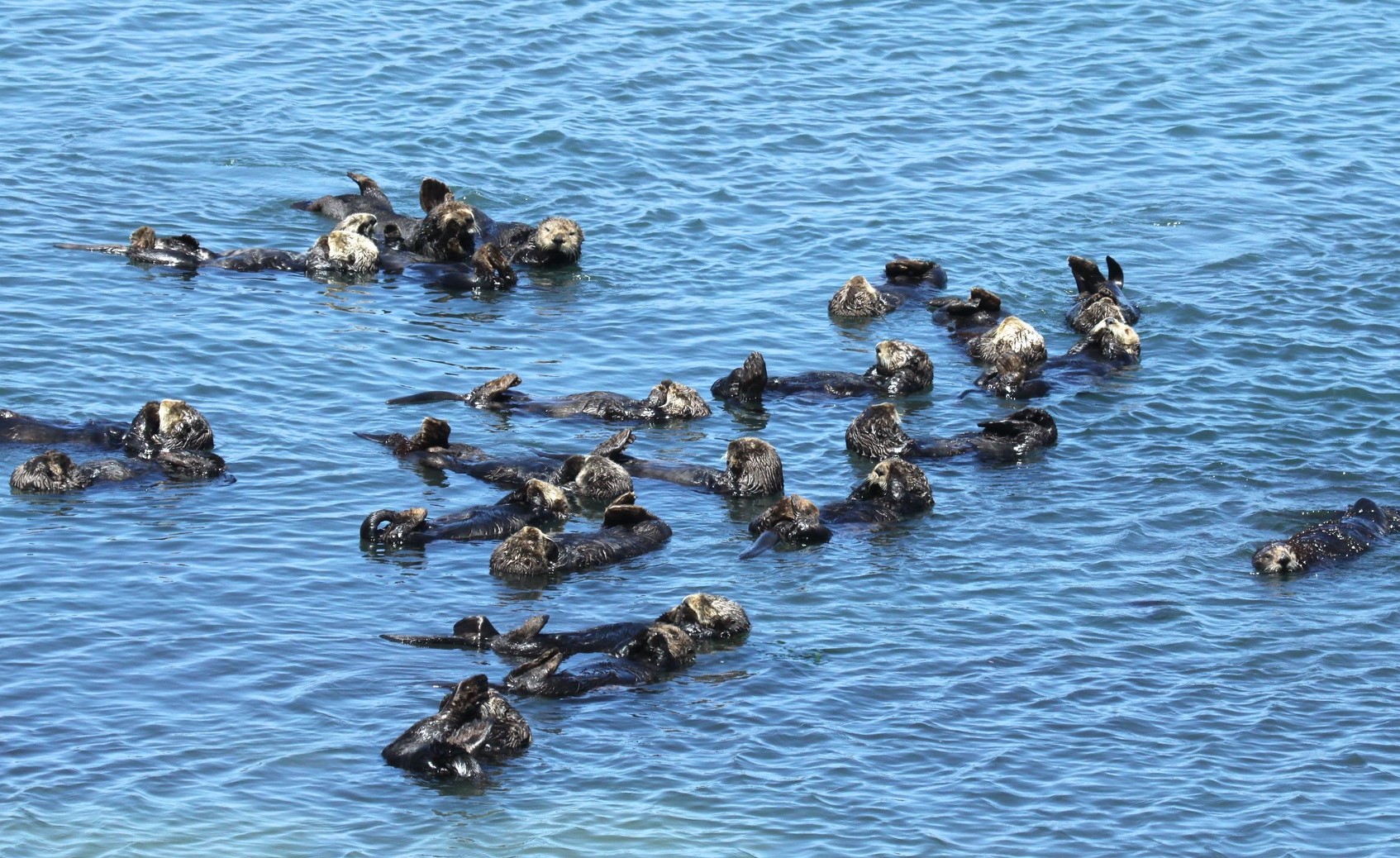A group of otters is called a raft or a romp. These social creatures often gather in groups for safety and companionship.
Otters are fascinating and playful mammals that are often seen frolicking in water bodies or resting on land. A raft of otters is a common term used when they are together in water, floating and intertwining with one another as if literally forming a raft.
On land, they’re referred to as a romp because of their playful and lively behavior. Such social groupings are essential for their survival, offering numerous benefits like collective foraging and protection against predators. With their charming antics and highly social nature, observing a group of otters, whether it’s called a raft or a romp, is a treat to wildlife enthusiasts and casual observers alike. Understanding these terms not only enriches our vocabulary but also enhances our appreciation for these charismatic creatures and their complex social dynamics.
Unveiling The Otter Group Name
Delving into the animal kingdom, one discovers the unique traditions of naming animal groups. A fascinating example is the name given to a gathering of otters. This term has roots in Old English and historical hunting lexicon. Collective nouns for animal groups often reflect a characteristic behavior or prominent feature of the group. For instance, the agility and playfulness of these aquatic mammals are mirrored in their group name.
Recognized both on land and water, a collection of these charismatic creatures carries a name that is as endearing as their social behavior. It highlights the importance and the role of language in how we perceive and interact with the natural world. Group naming is more than a linguistic tool; it encapsulates the essence of an animal’s social structure.

Credit: www.doi.gov
Tales Behind Otter Assemblies
Otters have often featured prominently in mythology and folklore, where the behavior and traits of these aquatic mammals were imbued with cultural significance. In various cultures, otter groups symbolize family bonds and cleverness, often depicted as playful and intelligent creatures. Tales of their antics and social structures have inspired numerous traditional stories where they often serve as cunning protagonists or trickster figures.
Intriguingly, some legends assign supernatural powers to otters, viewing them as shape-shifters or guardians of sacred waters. Such cultural representations enhance the enigma surrounding these social animals, emphasizing the fascination humans have long held towards the intricate dynamics within otter groups.
What Do You Call A Group Of Otters
A fascinating term is used to describe a group of otters; they are often referred to as a “raft.” This term is most commonly used when these playful animals are seen floating together on the water. On land, however, a group of otters can also be called a bevy or a romp, reflecting their energetic and frolicsome nature. The names given to groups of otters can vary regionally, and some areas have their own unique terms.
For example, in some parts of the UK, a group of otters may be colloquially referred to as a family or a lodge. These variations showcase the local cultural influences on the language used to describe the natural world. It’s important for enthusiasts and wildlife researchers alike to be familiar with these terms to better understand and communicate about otter behavior and social structure.
Understanding Otter Social Structure
Otters are highly sociable animals, often seen in groups called rafts or families. While solitary at times, particularly the males known as boars, females, called sows, and their offspring, termed pups, frequently congregate. These groups typically consist of up to 20 individuals and are a testament to otters’ complex social behavior.
Family groups play a crucial role in the survival of the species, providing mutual aid in raising young and defense against predators. The fluid dynamics of these groups reflect on their adaptive behaviors and the environments they inhabit.
Otter Group Terminology In Science
Scientific discourse often refers to a group of otters as a rafter, though terms like ‘bevy’ or ‘family’ are also in use. These terms reflect the social structure and behavioral patterns observed in otters, which are known for their highly sociable nature. Otters in the wild typically form these groups for mutual benefit, aiding in activities such as hunting and protection from predators. The term rafter not only characterizes the otter’s communal tendencies but also draws attention to their aquatic habits, similar to a raft floating along rivers and coasts. Otter conservationists and researchers emphasize the importance of understanding these groups for the purpose of habitat preservation and species sustainability.
Research into otter group dynamics sheds light on the complex interactions within these communities. It reveals the role of group living in otter populations and its implications for ecosystem health. The formation of a rafter is a fascinating display of otter intelligence and adaptability, showing their intrinsic capability to work collectively in a strategic manner.
Otter Conservation And Group Behavior
The social structures within otter populations play a vital role in their survival. These structures facilitate hunting and offer protection from predators. Conservation efforts are deeply focused on the preservation of otter groups by encouraging their natural behaviors and bonds. Researchers emphasize the importance of these kinship ties, as they contribute to reproductive success and the overall wellbeing of the species. Initiatives aim to secure their habitats and ensure a sustainable environment where these social groups can thrive.
Protecting otter groups is not just about safeguarding individual animals; it’s about maintaining the intricate social fabric that is crucial for the species’ longevity. Environmental conservation programs often involve community engagement, as a way to foster a cooperative relationship between humans and otter habitats, ensuring the enduring survival of these captivating creatures and their complex social structures.
Frequently Asked Questions On What Do You Call A Group Of Otters
What Is A Group Of Otters Called?
A group of otters is commonly referred to as a “raft. ” When otters group together, particularly while they are in the water sleeping or resting, they create what looks like a floating raft.
Can Otters Be Solitary Or Social?
Otters can be both solitary and social depending on the species. Some otters like the Giant Otter are highly social and live in groups, while others like the Eurasian otter are more commonly solitary.
How Many Otters Form A Raft?
The size of an otter raft can vary greatly. It can include as few as two otters or as many as one hundred in times of abundance or during social activities.
Where Do Otter Rafts Occur?
Otter rafts typically occur in aquatic environments such as rivers, lakes, and coastal areas. They come together on the water’s surface to rest, groom, or sleep.
Conclusion
Discovering the term ‘raft’ to describe a group of otters has been enlightening. These playful creatures show that even in their collective nouns, there’s a spark of whimsy. Remember this fun fact for your next trivia night or when you’re simply sharing fascinating animal knowledge.
Embrace the charm of otters and spread the word about their unique group name.
